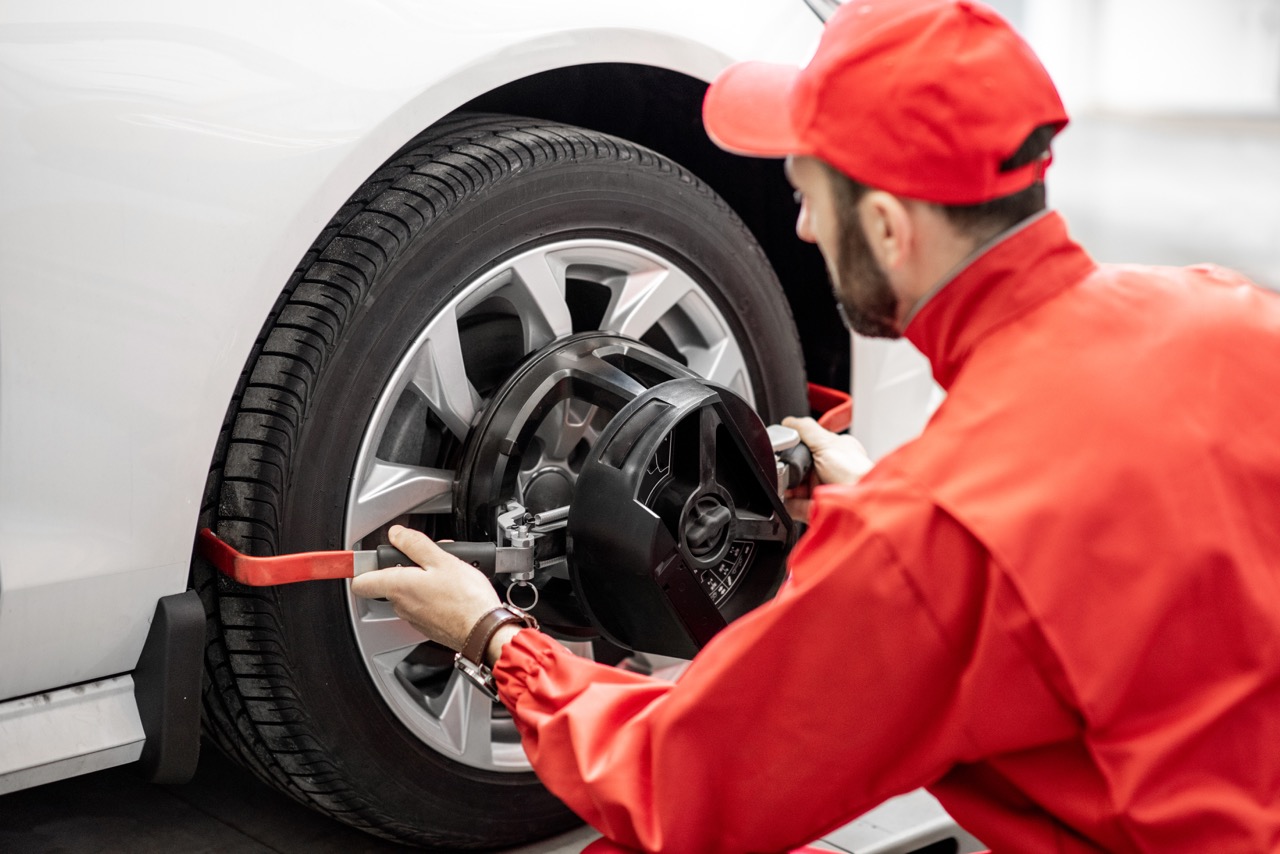
Do you know the difference between a wheel alignment and a tire rotation? While they’re often auto repairs done at the same time, they are not the same thing.
If you’re experiencing any trouble with your steering, such as the wheel pulling to one side or the vehicle shuddering, you should probably make an appointment at Master Muffler Orem. We’ll take a look at your alignment to see if it’s affecting your suspension. Let’s learn more about what an alignment is, how it differs from a tire rotation, and why both are important.
What is a Wheel Alignment?
An alignment isn’t just ensuring your tires are on your vehicle at the right angle. There’s more to this auto repair task than meets the eye.
Camber, Caster, and Toe
Part of a proper wheel alignment involves adjusting a wheel’s camber, caster, and toe.
Camber
The tilt of a tire inward and outward in relation to the vehicle body when viewed from the front.
Caster
How a tire is angled forward and backward in relation to the vehicle body when viewed from the side.
Toe
How a tire is tilted inward or outward from an overhead point of view of the vehicle.
If all of these angles aren’t perfected, that’s when your vehicle’s suspension is affected. Your car likely has a steering angle sensor that measures wheel steering alignment, so when the tires are adjusted during an alignment, the sensor is reset.
Signs You Need an Alignment
In addition to feeling a change in how your car handles, you might need an alignment if you’re getting fewer miles per gallon than usual. Also, signs you need an alignment include uneven wear on your tires. If the treads are wearing more on one side of the tire than the other, it’s an indication that your suspension is off.
How Vehicle Wheels Get Misaligned
Even regular driving can cause wheels to be misaligned over time. It is recommended to have wheel alignment looked at every 6,000 miles, but there are reasons to get it done sooner.
You Hit a Curb or Pothole
If you suddenly jar your car while driving, it can put your suspension out of alignment. Curbs, potholes, and even taking a speed bump too quickly misalign your wheels. Also, if you get into a minor fender-bender, it’s a good idea to have your alignment checked.
You Modified Your Vehicle
Did you get your vehicle lifted? If so, make sure the suspension hasn’t been affected. Modifications alter the original manufacturer specifications, which affects how your car drives. Be sure to have alignment modified when you alter the structure of your car or truck.
What is Tire Rotation?
Tire rotation refers to repositioning your car’s tires, such as relocating the front driver’s side tire to the rear passenger side. Doing so every 5,000 miles can allow for more even wear on your treads and a smoother ride.
Many drivers schedule a tire rotation with their oil changes to ensure they get it done regularly. Even if your tires have been wearing evenly, a rotation gives you and your mechanic a chance to catch any problems before they become too big and more expensive. If you have a vehicle warranty, regular rotation may be required to keep your tires eligible for coverage.
Signs You Need a Rotation
Like signs of misalignment, you’ll notice uneven wear when you need to rotate your tires. Also, if your car vibrates when driving, it could be due to uneven treads. If you’re getting your alignment checked, it’s not a bad idea to have your tires rotated as well.
How Tires Should be Rotated
Depending on the type of car or truck you drive, your tires will be rotated according to certain patterns. Front, rear, and all-wheel drive vehicles have different needs based on how they drive. Also, if you have a full-sized spare tire, that could be included in your regular rotations to ensure it’s evenly worn like the rest of your tires.
TYPES OF ROTATIONAL PATTERNS
- Rearward Cross
- X-Pattern
- Forward Cross
- Front to Rear
- Side to Side
When you bring your vehicle to the auto repair experts at Master Muffler, we can help determine the best rotational pattern for your vehicle. Let us know how we can help with your vehicle’s suspension needs by giving us a call at (801) 228-0045, or contact us online HERE.
Related Posts
Key Takeaways On average, passenger vehicle tires last 40,000 to 60,000 miles, depending on type, driving habits, and maintenance. Replace tires when tread depth reaches 2/32”, if damaged, or older than 10 years. Regular rotation, alignment, and proper inflation extend tire life. Aggressive driving, poor roads, and harsh weather shorten tire lifespan. Take advantage [...]
When you think about car maintenance, you probably focus on oil changes, tire rotations, and maybe even brake pad replacement. But what about your brake fluid? If you’ve ever wondered, “What does brake fluid do?” or “Why is brake fluid important?”, you’re not alone. Brake fluid might not be the most talked-about part of [...]
Is that high-pitched squeal from your brakes driving you—and everyone else—crazy? Don’t ignore it. Squeaky brakes aren’t just annoying, they’re your car’s way of saying something needs attention. Whether you're cruising through Salt Lake City or winding up Idaho’s mountain passes, here’s what’s likely going on, how you can fix it, and when it [...]





